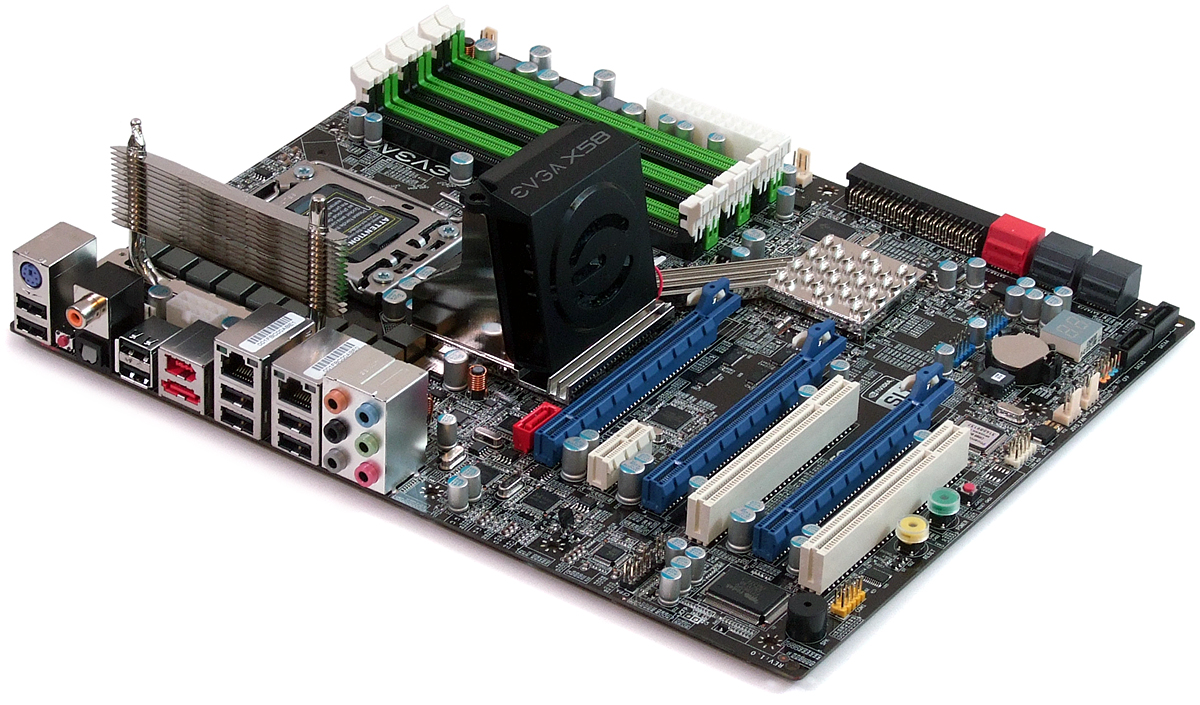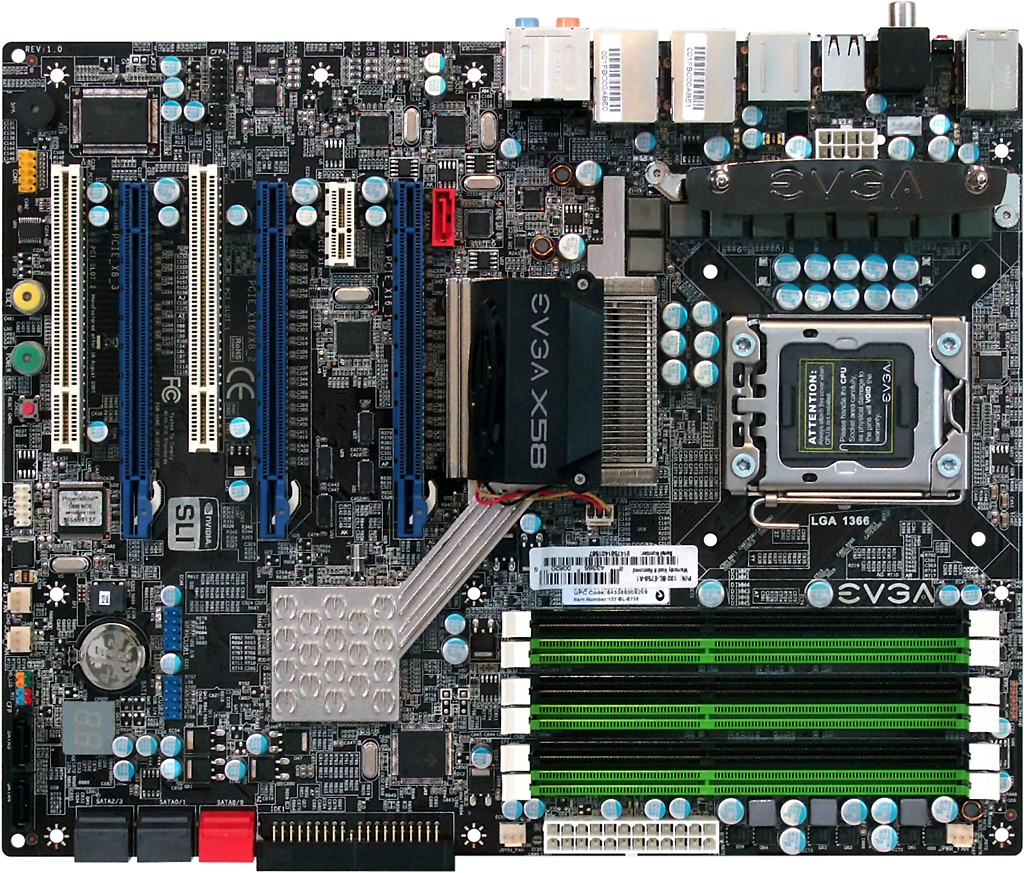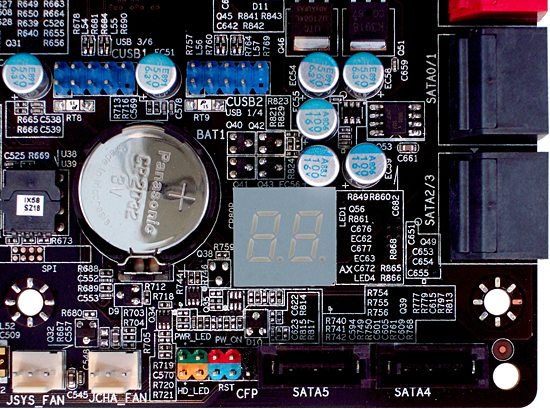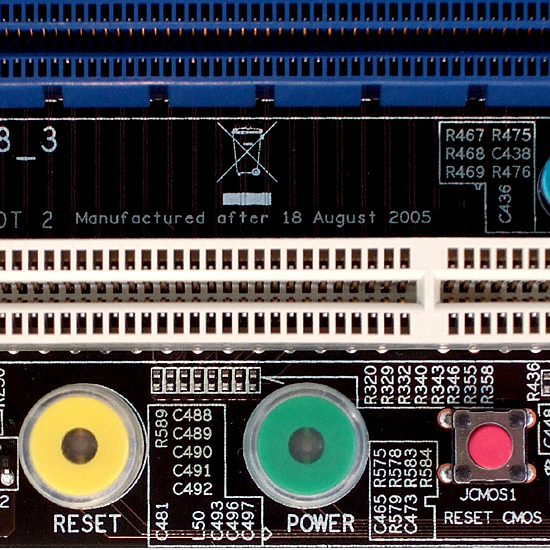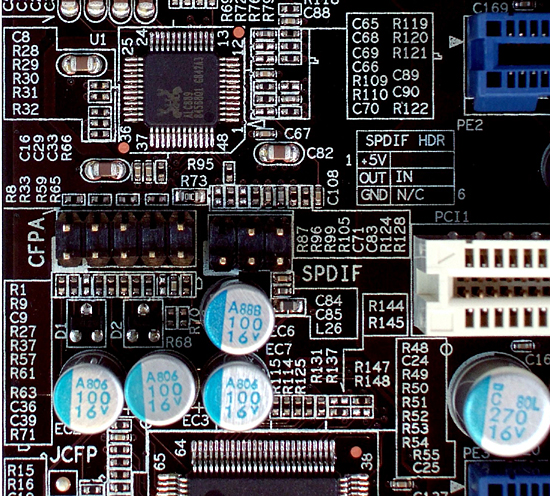Intel X58 Roundup: Six $300+ Platforms Compared
EVGA X58 3X SLI
Features and Layout
The first motherboard ever manufactured by EVGA, the X58 3X SLI, carries forward several visual cues from previous models the firm had previously re-branded as its own. However, other than cosmetics, this is a completely new design.
The X58 3X SLI was also the first Core i7 motherboard to provide proper slot spacing for 3-way SLI, with a slot layout similar to the more recent DFI motherboard in today’s comparison. Other brands often force builders to take special precautions in case selection by placing the third PCIe 2.0 slot at the bottom.
Also like the DFI motherboard, there is a lack of any expansion slot in the top position, which eliminates the possible use of a discrete sound card when three double-thick graphics cards are installed. The onboard audio quality should be good enough for all but the most discriminate audio fanatics, although casual users may complain about its limited support for Creative Labs' EAX technology.
A few things that stand out as being completely different from DFI include EPS12V, ATX/EPS main power, and Ultra ATA connectors that have all been moved “southward” away from the X58 3X SLI’s top edge. The EPS12V connector could be problematic in cases that have the power supply at the bottom, since builders typically try to rout that cable around the back of the motherboard tray and over the top edge of the board. That installation method usually stretches the cable to its limit, so moving the connector away from the top edge exceeds available cable length.
Any objection to the Ultra ATA’s lower placement is placated by absence of this technology in recent devices. EVGA could have easily done away with this interface, as it has with the floppy connection. Indeed a floppy connection would have been more useful, since many builders will require these to add AHCI or RAID drivers during a Windows XP installation.
A slightly unusual SATA arrangement puts two of the chipset’s ports along the bottom edge and two of an add-in controller’s ports next to the four forward-facing chipset ports. Buyers must take cable management into consideration when selecting an appropriate case for use with forward-facing ports.
Get Tom's Hardware's best news and in-depth reviews, straight to your inbox.
A ninth internal port is connected to the eSATA controller, so its location above the uppermost expansion slot is logical. We’d suggest using it for removable devices or a front-panel eSATA interface.
Above the two outward-facing SATA ports, a Port-80 diagnostics display makes quick work of diagnosing boot failures, if you know the codes.
Reset, Power, and Clear CMOS buttons along the X58 3X SLI motherboard’s lower edge make quick work of bench top-tuning sessions, but they become both redundant and impossible to reach once the motherboard is installed in a system.
| EVGA X58 3X SLI (Revision 1.0) | |
|---|---|
| Northbridge | Intel X58 Express |
| Southbridge | Intel ICH10R |
| Voltage Regulation | Ten Phases |
| BIOS | Z1G (02/12/2009) |
| 133.3 MHz Base Clock | 132.8 (-0.40%) |
| Clock Generator | ICS 9LPRS139AKLF |
| Connectors and Interfaces | |
| Onboard | 3 x PCIe 2.0 x16 (Two with Shared Pathways) |
| 1 x PCIe x1 | |
| 2 x PCI | |
| 2 x USB 2.0 (2 ports per connector) | |
| 1 x IEEE-1394 FireWire | |
| 1 x Serial Communications Port | |
| 1 x Ultra ATA (2 drives) | |
| 9 x SATA 3.0 Gb/s | |
| 1 x Fan 4-pin (CPU) | |
| 4 x Fan 3-pins (Chassis, Power) | |
| 1 x Front Panel Audio connector | |
| 1 x S/P-DIF I/O | |
| 1 x Power Button | |
| 1 x Reset Button | |
| 1 x CLR-CMOS Button | |
| 1 x Port-80 Diagnostics Display | |
| I/O Panel | 1 x PS2 (keyboard) |
| 8 x USB 2.0 | |
| 1 x CLR-CMOS Button | |
| 2 x Digital Audio Out (Coaxial + Optical) | |
| 1x IEEE-1394 FireWire | |
| 1 x External SATA (eSATA) 3.0Gb/s | |
| 2 x RJ45 Ethernet | |
| 6 x Analog Audio Jacks (8-ch. out, 4-ch. in) | |
| Mass Storage Controllers | |
| Intel ICH10R | 6 x SATA 3.0 Gb/s (RAID 0, 1, 5, 10) |
| JMicron JMB363 PCIe | 1 x Ultra ATA-133 (2-drives) |
| 2x SATA 3.0 Gb/s | |
| JMicron JMB362 PCIe | 1 x SATA, 1x eSATA, 3.0 Gb/s |
| Network | |
| 2 x Realtek RTL8111C PCIe | Dual Gigabit LAN |
| Audio | |
| Realtek ALC889 HD Codec | Eight-Channel (7.1 Surround) Output |
| IEEE 1394 FireWire | |
| TI TSB43AB22 | 2 x FireWire 400 (1 x Internal, 1 x I/O Panel) |
High-quality components are used throughout, but one problem we’ve had when installing the X58 3X SLI in a 3-way SLI system is insufficient clearance between the front-panel audio header and the sinks of popular graphics cards such as the reference-design GTX 280 and GTX 260. The cards we tried were even EVGA models, where a notch in the sink provides almost adequate space that still requires excessive force to install the middle card. A Realtek ALC889 codec provides high-quality digital-to-analog conversion for the ICH10R integrated audio controller.
A JMicron JMB363 controller provides Ultra ATA and two SATA 3.0 Gb/s ports at the motherboard’s front, while a JMB362 adds an eSATA and another SATA 3.0 Gb/s port near the rear panel. PCIe x1 links provide 250 MB/s peak interface bandwidth (~2.5 Gb/s) that must be shared by all devices on each controller.
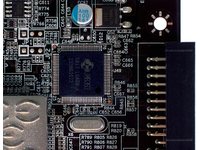
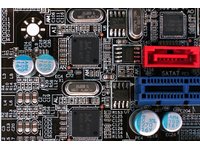
Two Realtek Gigabit Ethernet controllers also make use of PCIe bandwidth, without any device-sharing limitations.
Current page: EVGA X58 3X SLI
Prev Page X58-T3eH8 BIOS, Software, And Accessories Next Page X58 3X SLI BIOS, Software, And Accessories-
arkadi Some times it really hard to stay objective, but you did it, grate article.Reply
I would consider few other aspects as well, like service and RMA statistics.
In some countries you wont have official representation of a vendor, and in case of RMA you can end up with different MB model, usually not for the best.
From my experience i recommend for most of you to get more common boards. -
wdmso "Intel X58 Roundup: Six $300+ Platforms Compared " this title will leadReply
some less informed readers that they can get the cpu memory and MB for 300.00.
It should read "Intel X58 Roundup: Six $300+ Motherboards Compared"
the title is misleading -
neiroatopelcc I can't afford an i7 system, but when I see beautiful motherboards like that dfi and the foxconn board, I wish I could! That foxconn board almost makes me feel like looking at a beautifully built soltek board with uniform colors and good looks. Looks ain't everything, but looks do matter. I love my gigabyte board because it works great, but I would love it even more if it came 'styled' like the dfi green or the foxconn red board ....Reply -
When you review the less-expensive X58 boards, I'd appreciate it if you would evaluate them in terms of which is the likely to be the most stable, most reliable, and most problem-free non-overclocked board. Thanks.Reply
-
phantom93 Lol nice article, lol i love the soldering job on the port-80 diagnostics digits for the DFI lan party board.Reply -
inversed It seems odd to have skipped mentioning the Gigabyte EX58's driver-less RAID capability. I was able to get Windows XP to boot off of a mirrored RAID without needing the floppy and the initial setup went very quickly. One unfortunate aspect of this mobo, however is that it cannot output digital audio and analog audio at the same time. So no switching between surround sound and headphones without changing settings in the audio control software.Reply -
jeffunit Though the core i7 is a crazy fast processor, it doesn't offer ECC support. That is why I just bought an amd phenom II 940. Perhaps 'gamers' don't care about ECC but only how many graphics cards they can stuff in the mb. On the other hand, IBM estimated 1 error per gig per week. So at 4gb, that is less than 2 days between errors. Perhaps that isn't noticeable with microsoft operation systems, but I keep my machines up for weeks or months at a time...Reply
My cheap asus mb not only supports ECC, but ECC scrubbing, chipkill, and more. Who cares how fast a computer is, when it crashes often?
-
jeffunit Though the core i7 is a crazy fast processor, it doesn't offer ECC support. That is why I just bought an amd phenom II 940. Perhaps 'gamers' don't care about ECC but only how many graphics cards they can stuff in the mb. On the other hand, IBM estimated 1 error per gig per week. So at 4gb, that is less than 2 days between errors. Perhaps that isn't noticeable with microsoft operation systems, but I keep my machines up for weeks or months at a time...Reply
My cheap asus mb not only supports ECC, but ECC scrubbing, chipkill, and more. Who cares how fast a computer is, when it crashes often?
-
Crashman wdmso"Intel X58 Roundup: Six $300+ Platforms Compared " this title will lead some less informed readers that they can get the cpu memory and MB for 300.00.It should read "Intel X58 Roundup: Six $300+ Motherboards Compared"the title is misleadingReply
You're right: I belive the word "Platform" was substituted by another editor to make the title shorter, so it would fit better in the headline bar. I might have chosen "Mobos" myself when encountered with such an issue, but they don't like using slang in titles.
temporary87654When you review the less-expensive X58 boards, I'd appreciate it if you would evaluate them in terms of which is the likely to be the most stable, most reliable, and most problem-free non-overclocked board. Thanks.
Good suggestions, but the problem is that all these boards were stable and built for reliability when overclocked. Using lower speeds increases stability and reliability, and you just cannot exceed "100% Stability". All the boards also used high-quality electrical components, which means a reliability test would require years to reveal any differences.
inversedIt seems odd to have skipped mentioning the Gigabyte EX58's driver-less RAID capability. I was able to get Windows XP to boot off of a mirrored RAID without needing the floppy and the initial setup went very quickly. One unfortunate aspect of this mobo, however is that it cannot output digital audio and analog audio at the same time. So no switching between surround sound and headphones without changing settings in the audio control software.
We'll have to see what we can do about getting the author some digital speakers or a digital receiver headset to test for such issues in the future. That particular issue hadn't come up prior to testing. -
ryanaxiom What about the Gigabyte UD5? I guess it doesn't fall in the 300+ category at $288 from Newegg, but stil...Reply
It has all the benefits of the EX-58-Extreme minus the gigantic NB cooler, but also allows use of an x8 RAID card in the open ended slot (I have one installed) and if you get straight risers/wearout protectors you can install a x1 sound card in the top slot! The best of all worlds!!!
The only small complaint I have is that sometimes I have to try to boot twice since the AHCI bios doesn't always want to load after post.
